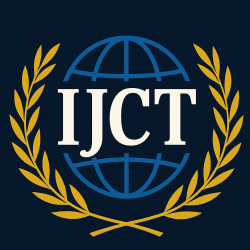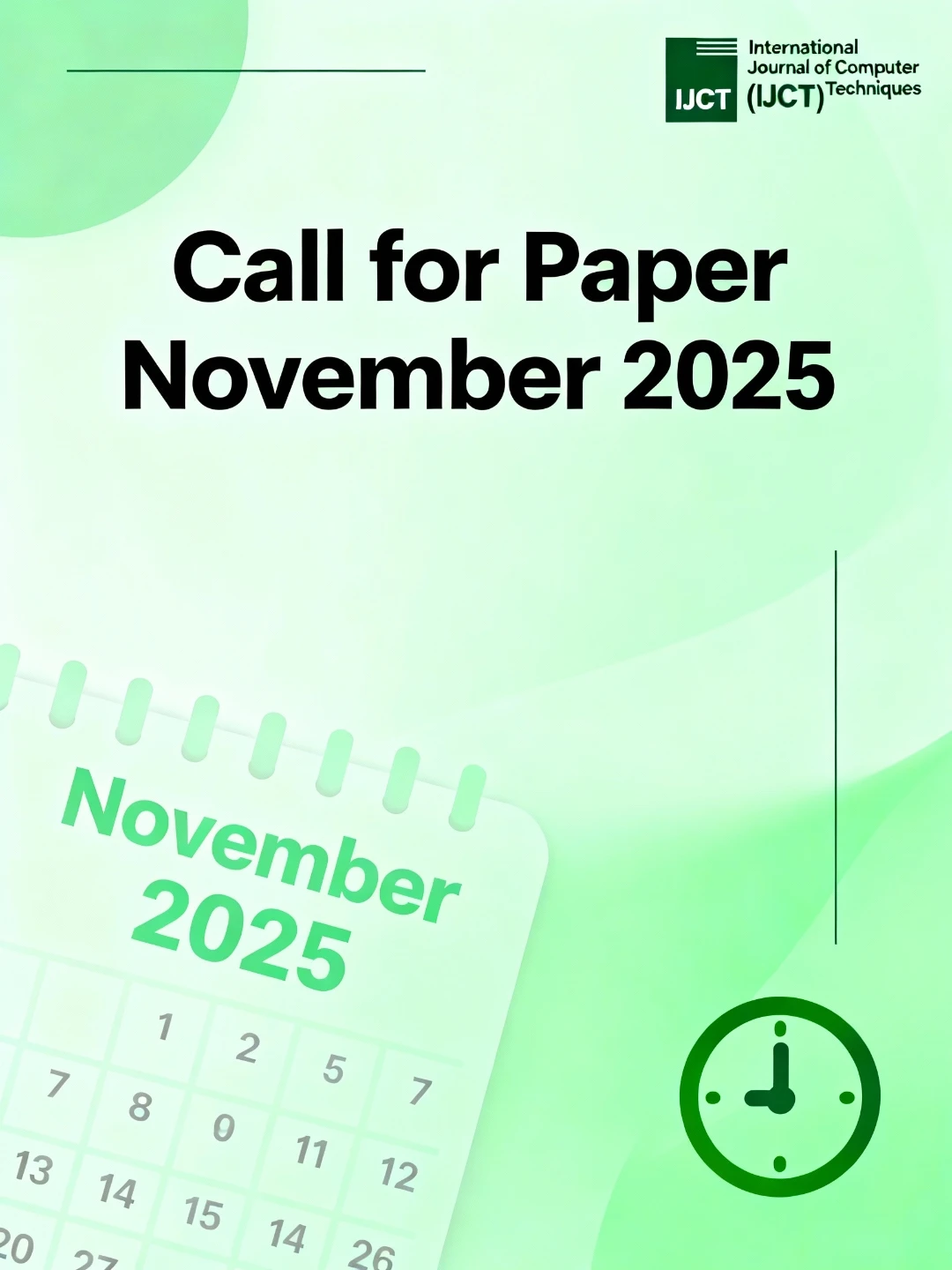
“Impact of Social Media Usage on the Academic Performance of Undergraduate Students in Assam: A Structural Equation Modeling Approach Using AMOS” – Volume 12 Issue 5

International Journal of Computer Techniques
ISSN 2394-2231
Volume 12, Issue 5 | Published: September – October 2025
Author
Dr. Hitesh Choudhury
Table of Contents
ToggleAbstract
Social media has become an integral part of students’ daily lives, influencing how they communicate, learn, and share academic information. This study investigates the impact of social media usage on the academic performance of undergraduate students in Assam by examining five key factors—Usage Frequency (UF), Perceived Usefulness (PU), Perceived Ease of Use (PEOU), Time Management (TM), and Academic Engagement (AE). Data collected from 279 respondents were analyzed using Structural Equation Modeling (SEM) with AMOS (Analysis of Moment Structures) to explore the relationships between these constructs. The results indicate that while excessive usage frequency negatively affects academic performance, PU, PEOU, TM, and AE have significant positive effects, suggesting that effective and purposeful use of social media enhances learning outcomes. Overall, the study highlights that social media, when used with proper time management and academic intent, can serve as a valuable educational tool that fosters engagement, collaboration, and academic success.
Keywords
Social Media, Academic Performance, Structural Equation Modeling, AMOS, Time Management, Academic EngagementConclusion
This study concludes that social media usage significantly influences the academic performance of undergraduate students, both positively and negatively, depending on how it is utilized. The findings reveal that while excessive usage frequency tends to hinder academic achievement due to distractions and time wastage, factors such as Perceived Usefulness, Perceived Ease of Use, Time Management, and Academic Engagement have a positive and meaningful impact on learning outcomes. Students who perceive social media as easy to use and beneficial for academic purposes are more likely to engage effectively in educational activities, leading to improved performance. Moreover, proper time management allows students to balance their social and academic responsibilities efficiently, reducing the adverse effects of overuse. Academic engagement through social media enhances collaboration, motivation, and knowledge sharing, which strengthens students’ learning experiences. Overall, the study emphasizes that responsible and purposeful use of social media can transform it into a powerful academic tool rather than a source of distraction.
References
[1] Kaplan, A. M., & Haenlein, M. (2010). Users of the world, unite! The challenges and opportunities of social media. Business Horizons, 53(1), 59–68. [2] Pempek, T. A., Yermolayeva, Y. A., & Calvert, S. L. (2009). College students’ social networking experiences on Facebook. Journal of Applied Developmental Psychology, 30(3), 227–238. [3] Junco, R. (2012). Too much face and not enough books: The relationship between multiple indices of Facebook use and academic performance. Computers in Human Behavior, 28(1), 187–198. [4] Selwyn, N. (2009). Faceworking: Exploring students’ education-related use of Facebook. Learning, Media and Technology, 34(2), 157–174. [5] Tess, P. A. (2013). The role of social media in higher education classes (real and virtual)—A literature review. Computers in Human Behavior, 29(5), A60–A68. [6] Venkatesh, V., & Davis, F. D. (2000). A theoretical extension of the Technology Acceptance Model: Four longitudinal field studies. Management Science, 46(2), 186–204. [7] Davis, F. D. (1989). Perceived usefulness, perceived ease of use, and user acceptance of information technology. MIS Quarterly, 13(3), 319–340. [8] Hrastinski, S. (2009). A theory of online learning as online participation. Computers & Education, 52(1), 78–82. [9] Meier, A., & Reinecke, L. (2021). Computer-mediated communication, social comparison, and subjective well-being. Proceedings of the National Academy of Sciences, 118(9), 1–8. [10]Festinger, L. (1954). A theory of social comparison processes. Human Relations, 7(2), 117–140. [11]Kline, R. B. (2015). Principles and practice of structural equation modeling (4th ed.). Guilford Press. [12] Kaiser, H. F. (1974). An index of factorial simplicity. Psychometrika, 39(1), 31–36. https://doi.org/10.1007/BF02291575 [13] Hair, J. F., lack, W. C., Babin, B. J., Anderson, R. E. & Tatham, R. L. (2010). Multivariate Data Analysis, 7th edition, Pearson Parentice Hall. [14] Fornel, C. & Larcker, D. F. (1981). Evaluating structural equation models with unobservable variables and measurement errors. Journal of Marketing Research. 18(1), pp. 39-50. [15] Schmitt, N. (1996). Uses and abuses of Coefficient . Psychological Assessment, 8(1), pp. 350-353. [16] Hu, L. T. & Bentler, P. M. (1999). Cutoff Criteria for fit indexes in covariance structure analysis: Conventional criteria versus new alternatives. Structural Equation Modeling. 6(1), pp. 1-55 [17] Hancock, G. R. & Muller, R. O. (2006). Structural Equation Modeling: A Second Course Charlotte, NC. Information age Publishing. 2, pp. 439-492
IJCT Important Links
© 2025 International Journal of Computer Techniques (IJCT).










